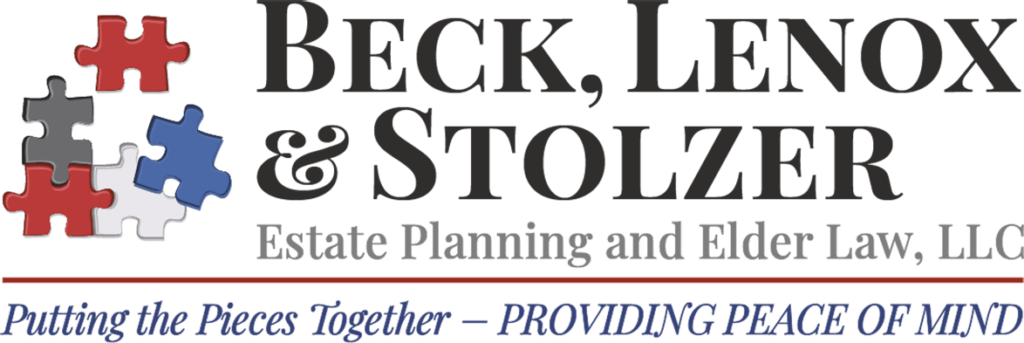Retirees who own traditional IRAs face a yearly requirement: after age 73 (or 72 for those born before 1951), the IRS mandates that account holders take required minimum distributions (RMDs). While these distributions are a way to ensure tax-deferred savings are eventually taxed, they can also increase taxable income, push retirees into higher tax brackets and affect Medicare premiums.
Beck, Lenox & Stolzer Estate Planning and Elder Law provides information from Charles Schwab on how to reduce your RMDs and taxable income with Qualified Charitable Distributions (QCDs). QCDs)offer a solution for those who want to reduce their tax liability while making a meaningful impact.
What are Qualified Charitable Distributions?
A QCD directly transfers funds from a traditional IRA to a qualified 501(c)(3) charity. These distributions count toward your annual RMD requirement but are excluded from your taxable income, up to a limit of $108,000 per person per year (as of 2025).
Because the funds go directly to charity, they are not included in your adjusted gross income (AGI), which is used to calculate taxes and other financial thresholds, such as Medicare premium surcharges or the taxation of Social Security benefits.
This is especially valuable for individuals who take the standard deduction and don’t itemize, as the QCD provides a tax benefit that itemized charitable donations would not.
Why QCDs are a Smart Estate-Planning Tool
Beyond immediate tax advantages, QCDs also play a role in long-term estate planning. Reducing IRA balances through charitable giving lowers the total value of your estate, which may help limit exposure to estate taxes or ease the inheritance tax burden on beneficiaries in certain states.
Leaving an IRA to heirs can create a significant tax obligation, as inherited IRAs (except for particular beneficiaries) must be distributed within ten years. Using QCDs during your lifetime lets you control how and when funds are taxed and where those funds make a difference.
This approach also aligns charitable giving with your broader legacy goals. Whether you support a religious organization, an educational foundation, or a health-related cause, QCDs let you fund your values while managing income efficiently.
How to Make a Qualified Charitable Distribution
To qualify, the IRA account holder must be at least 70½ years old at the time of the distribution, and the gift must go directly from the IRA to the charity. Checks written to the account holder and endorsed to the charity will not be a QCD.
You must instruct your IRA custodian to issue the payment directly to the charity. It’s also wise to notify the charity, so they can appropriately credit your gift and provide a written acknowledgment for your records.
Confirm that the organization qualifies as a public charity under IRS rules. Private foundations, donor-advised funds and supporting organizations generally do not qualify.
It’s also important to keep documentation. The custodian will issue a Form 1099-R for the distribution, and you’ll need a receipt from the charity. Even though the amount won’t appear as taxable income, it should still be reported on your tax return.
When to Seek Professional Guidance
While QCDs are relatively straightforward, they should be part of a coordinated estate and retirement income strategy. Working with an estate planning attorney or financial advisor helps ensure that your charitable goals align with your long-term tax and inheritance plans.
Some retirees may benefit from combining QCDs with strategies, such as Roth conversions or charitable trusts. Professional guidance helps avoid unintended tax consequences and ensures that assets are used as intended in more complex cases, especially for those with large IRAs or multiple heirs.
Beck, Lenox & Stolzer attorneys are experienced at helping clients set up legacy planning and the use of different charitable methods, including QCDs. In fact, all of our attorneys are available to present to your church groups and other charities on charitable giving. If you personally want to explore how to reduce your RMDs and taxable income with Qualified Charitable Distributions, schedule a free phone consultation to begin the discussion.
Key Takeaways
- QCDs reduce taxable income: Distributions made directly from your IRA to a qualified charity can count toward your RMD but are excluded from your adjusted gross income.
- Charitable giving can lower estate value: Reducing IRA balances may limit estate tax exposure or reduce tax burdens on heirs.
- QCDs benefit non-itemizers: Even if you take the standard deduction, QCDs offer a tax-efficient way to give.
- Proper handling is essential: Funds must be sent directly from the IRA custodian to a qualified charity to qualify.
- Legal and financial planning ensures alignment: Professionals can help you incorporate QCDs into a broader estate strategy.
Reference: Charles Schwab (Dec. 13, 2024) “Reducing RMDs With QCDs”










